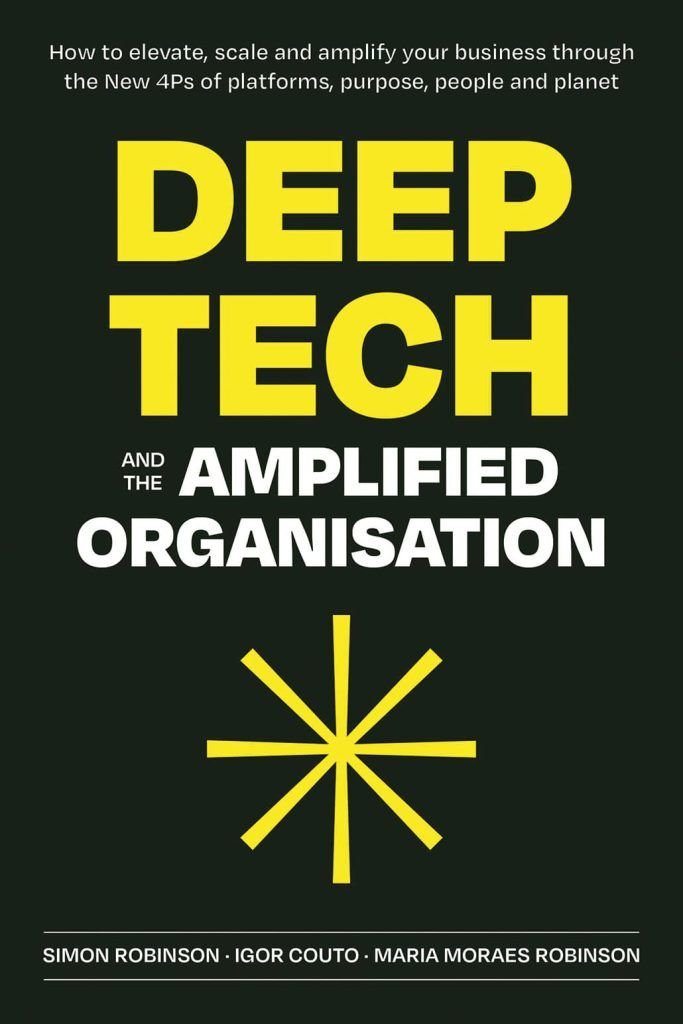
Don’t derail your digital transformation
Coauthor of a new book, Simon Robinson of Holonomics examines the expensive mistakes leaders make when adopting a new digital strategy – and how to avoid them ...
Coauthor of a new book, Simon Robinson of Holonomics examines the expensive mistakes leaders make when adopting a new digital strategy – and how to avoid them
The challenge that most businesses face today in relation to digital transformation is that they are still starting with the technology rather than with a deep understanding of their customers, and how they are going to generate new forms of value in the digital economy. The result is that millions of dollars of investment are wasted each year in the development of digital systems that fail to integrate into a coherent and scalable enterprise-wide architecture.
At the highest level, digital transformation can be defined as the shift in the way an organisation delivers value through the implementation of digital business models, digital operating models and digital platforms. Our experience in helping organisations to develop digital strategies, business models and value propositions has led to us identifying the following mistakes that executive teams make when structuring their digital transformation initiatives:
- Design teams are not aligned with the overall strategy or core value proposition.
- The organisation does not understand the logic of digital economy business models.
- Failure to understand how platforms generate value for users, customers and clients.
- Confusion around the platform architecture and its boundaries with the underlying technologies and services that support digital platforms.
- Organisation-wide cognitive biases that lead to conflicting or limited conceptions of the proposed transformation based on people’s functions.
Understanding the underlying logic
Digital transformation is as much a change of mindset and culture as it is about developing and integrating digital systems and optimising data and AI-based analytical tools. To be successful, leaders need to develop “platform vision” and understand the new underlying business model logic and platform architectures necessary to deliver new forms of value in a manner which scales across markets, industries and ecosystems.
Our collective experience in helping senior executives to help their organisations to transform has allowed us to identify five key interrelated leadership behaviours that act to inhibit the success of digital transformation programmes:
- Not taking a systemic approach to strategy, thereby failing to align the organisation through interdependent objectives, indicators, goals and projects.
- Placing a disproportionate amount of value on technology in comparison to the people in the organisation who ultimately deliver value.
- The core purpose of the proposed digital transformation not being articulated clearly, thereby not being communicated across the organisation, ecosystem and out to clients, customers and wider stakeholders.
- Vast quantities of data which are collected but not used due to a lack of deep analytical and computational sensemaking capabilities.
- Overly-complex platform architectures which are built and deployed in functional silos, without reference to the enterprise digital operating model.
Leaders have a vital role to play in avoiding mission-critical mistakes by taking a systemic approach to their digital transformation initiatives, by creating alignment, communication that is trusted and full engagement from all involved. Before an organisation can start to design and implement their digital transformation programmes, the leadership team has to understand, identify and eliminate the following four interconnected inhibitors:
- Blurred vision – An organisation’s vision can be blurred due to outdated incentives, policies and management systems that are no longer relevant for digital operating models. When this happens leaders lose the ability to link their digital transformation initiatives to their enterprise-level operations and vision of the overall strategy.
- Digital immaturity – This relates to the level at which innovation is understood and embedded within an organisation. The decision-making level in these contexts can often be deficient, with innovation taking place in siloed departments with low levels of connection and communication with other areas.
- Failures in leadership teams – Top-down driven organisations have the potential to suffer from over-rigid structures, meaning that they cannot respond to changing events rapidly. This is reflected in their conception of agile, seeing it as velocity and volume rather than flexibility and continual adaptation to changing requirements and business environments.
- Broken enterprise architectures – These are the result of poorly-designed platform services which do not create the expected customer experiences, with the logic of the enterprise architecture breaking down due to the level of complexity not being suitably managed and understood.
These digital platform inhibitors can be used as a diagnostic to test the readiness of an organisation’s culture for digital transformation. It is of vital importance for leaders to understand these inhibitors and how they impact on relationships, communication, design and strategic alignment.
Leadership teams who are alert to these inhibitors and act to remove them can still fall into the trap of being prisoner to agile methodologies. The problem is when they become over-reliant on certified agile coaches who limit themselves to one single approach to agile, as opposed to understanding agile primarily as a mindset and set of values which enables an organisation to continually adapt, improve and find the most effective agile practices for their specific context by developing, testing and implementing minimal viable organisational changes.

One of the most important insights for leadership teams to understand therefore is that hard skills are often not the most difficult aspect of digital transformation. It is the quality of the human dimension which impacts the most in a project’s success. Failure to take the human dimension into account runs the risk of extremely expensive failure. When leaders understand this, these inhibitors are taken seriously, diagnosed and rectified before attempting to launch wide-scale digital transformation initiatives.
Since the ultimate goal is one of strategic business transformation, digital transformation initiatives should always be accompanied by cultural transformation. This leads to the implementation of optimised digital operating models that are aligned with both enterprise and digital architectures, making the expansion and scaling of the company possible through people who are empowered, engaged and who have a strategic understanding of platforms and the core value proposition.
HR teams therefore have a key role to play in their organisation’s strategy by ensuring that employees from all departments are able to work more closely with IT departments to ensure better alignment in digital transformation programs. The role of HR professionals expands, therefore, to playing a pro-active role in both key IT programs, contributing, along with the leadership, to the alignment and communication of strategic goals and initiatives.
For this reason, HR fundamentally transforms from being primarily an operational department to one of central strategic importance, just as it has at Apple, where the Head of People is also the Head of Retail. HR functions can impact significantly by helping people to flourish and contribute to the development of the their organisations’ capacity for reinvention and adaptation, enhancing collective creativity, systemic thinking, collaboration and communication.
We are now entering the most technologically important era since the industrial revolution. This is due to the accelerated use of deep technologies, the move to hybrid ways of working and disruption caused by platform-based business models. By facilitating a systemic understanding of the mindsets, platform architectures, and conceptual definitions of digital transformation, leaders can amplify their impact by creating more agile, competitive and customer-centric organisations.
About the author
Simon Robinson is the CEO (worldwide) of Holonomics and coauthor of ‘Deep Tech and the Amplified Organisation: How to elevate, scale and amplify your business through the New 4Ps of platforms, purpose, people and planet’.


